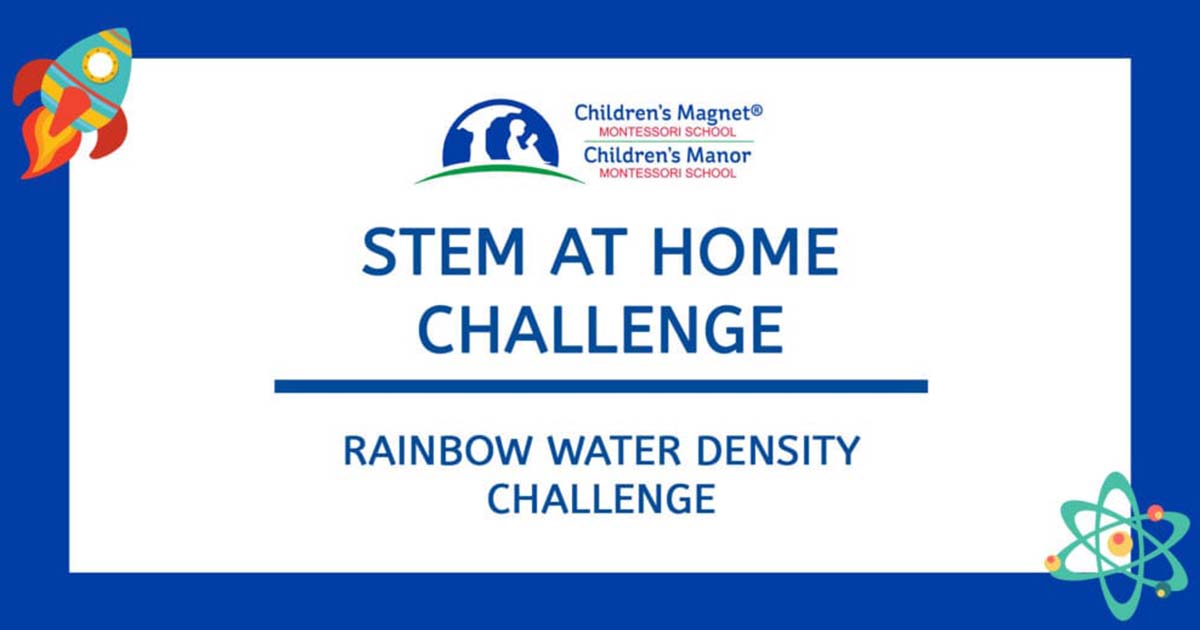
07 Jan STEM Challenge – Rainbow Water Density Challenge
Next week you will be learning about density, and in our STEM Challenge this week we are going to learn the basics of density with this rainbow sugar water challenge. Our challenge is to create layers of different colored water within a glass.
Visit our blog every Thursday to see our latest STEM challenge and share your creations on social media using #CMMSSTEMChallenge or by emailing marketing@childrensmanor.com. Be sure to submit your photos to us by Monday, January 11!
Materials:
-
-
- 4 drinking glasses
- Measuring Cup
- Food Dye (optional, but it is more fun and visible with color!)
- Syringe (optional, but makes it easier to add the different colored water layers)
- Sugar
- 1 Tbsp Measuring Spoon
- Spoons
- A small glass for layering the water
-
Directions:
-
-
- Fill the 4 drinking glasses with 100ml of warm water. The water must be warm so the sugar we will add in a few steps will dissolve.
- Add a couple of drops of different food dye to each water glass and stir. If you don’t have food dye, you can still do this experiment, you just will not have a rainbow at the end to clearly show the water layers!
- Decide the order in which you would like to layer your colors from bottom to top and arrange them on your table from left to right.
- Starting with the bottom color – add 3 Tbsp of sugar to the water, next add 2 Tbsp of sugar to your next color, 1 Tbsp of sugar to the third color, and none to the top color.
- Stir vigorously with a spoon until all the sugar has dissolved in your water glass. If the sugar is not fully dissolved, gently warm the water in the microwave and stir again until completely dissolved.
- Let the colored water cool completely
- Using a syringe or gently pouring, add about 20ml of the bottom color to a small glass, then 20 ml of the next and so on. You will have created a layered rainbow water effect into the glass!
-
Why do you think the colors are staying mostly separated? It has to do with density! See the explanation below.
The Science Behind the Experiment
The sugar particles that we added to the water are small enough to fill the gaps between the water particles. As more sugar is added, more space between the water particles is filled and the volume of liquid increases. The “heavier” the volume of liquid, the more dense or “heavier” it is.
So the glass with 3 Tbsp of sugar contains the largest number of particles per 100ml of water and is the densest or heaviest. Which is why the color you put the most sugar in will stay at the bottom, and the water we did not add sugar to, or the least dense, will be ‘floating’ at the top.
Don’t forget to send a photo of you and the final product to marketing@childrensmanor.com by Monday, January 11!
Activity credit: My Kids Lick the Bowl


